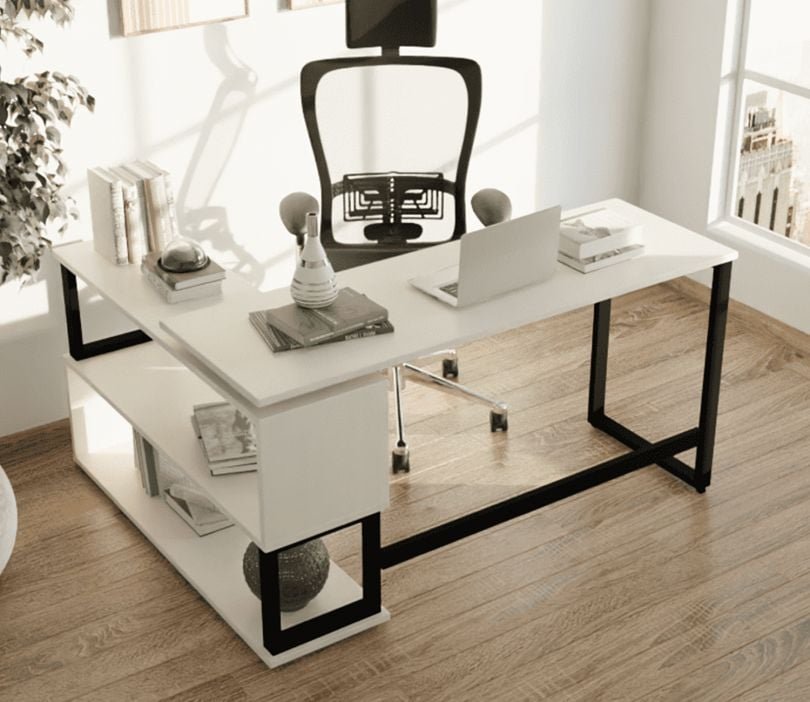Creating a productive workspace isn’t just about the job you do—it’s also about the space you do it in. Whether you’re working in a corporate office or a home setup, the right office furniture plays a vital role in enhancing both comfort and efficiency. A thoughtfully furnished space supports good posture, minimizes distractions, and can even improve your overall work performance.
So how do you choose office furniture that meets both functional and aesthetic needs? Here’s a guide to help you make the best choices for your workspace.
1. Start with Your Needs and Daily Routine
Before you shop or browse office furniture online, assess how you spend your workday. Do you spend long hours on the computer? Do you need space for meetings, paperwork, or creative work? Understanding your daily tasks helps determine the type of furniture that best supports your activities.
For example, a programmer might prioritize an ergonomic chair and a spacious desk, while a graphic designer might need a workstation with additional storage for tools and equipment.
2. Prioritize Ergonomic Design
Ergonomics is a must when it comes to choosing modern office furniture. Spending hours at a desk without the right support can lead to fatigue, discomfort, and even long-term health issues.
Look for features such as:
-
Adjustable chairs with lumbar support
-
Desks with appropriate height and legroom
-
Monitor stands or arms to position screens at eye level
-
Sit-stand desks for flexible posture changes
When selecting home office furniture, ergonomics becomes even more critical since you’re likely managing space constraints. An ergonomic setup ensures you remain focused and comfortable throughout the day.
3. Consider the Space and Layout
A common mistake people make is buying furniture that doesn’t fit the size or layout of their workspace. Take accurate measurements before choosing your desk, chair, and storage units.
Think about the flow of the room—can you move around easily? Is there enough lighting? Where are your power outlets located?
For smaller spaces, look for compact and multifunctional furniture—a corner desk or foldable table might suit better than a bulky workstation. If you’re working from home, space-saving home office furniture can transform even a small nook into a productive zone.
4. Look for Functional Storage Solutions
Clutter is one of the biggest enemies of productivity. Whether in a large office or a small home workspace, organizing your documents and supplies is essential.
Invest in file cabinets, drawer units, or shelving systems that keep everything within reach but out of the way. If you’re browsing to buy office furniture, don’t overlook storage—it’s just as important as your desk or chair.
Modular storage solutions are particularly useful in shared office environments or small rooms where flexibility is needed.
5. Choose Materials that Match Your Style and Usage
The material of your furniture influences not just aesthetics but also durability and maintenance. Wood, metal, glass, and engineered materials all offer different benefits.
-
Wood adds warmth and a traditional feel—ideal for long-term durability
-
Metal frames bring an industrial, modern touch and are easy to clean
-
Glass desktops are stylish but may require more maintenance
When shopping for office furniture online, you can filter by material type to find something that matches your personal taste and work requirements.
6. Match the Furniture to Your Work Culture
If you’re furnishing a corporate workspace, the style and layout of your furniture should reflect your team’s work culture. Open-plan settings might benefit from collaborative desks and lounge seating, while private offices may call for executive desks and high-back chairs.
For home-based professionals, the goal is often to create a space that separates “work mode” from the rest of your living area. Stylish home office furniture that blends with your interior design can help create that balance.
7. Think About Long-Term Value
Choosing quality over quantity is crucial. While it might be tempting to go with the cheapest option, poorly made furniture may cost more in the long run due to discomfort or the need for early replacement.
Evaluate the build quality, warranty, and user reviews when you buy office furniture. A good chair or desk can last for years and significantly improve your work experience.
8. Don’t Forget Lighting and Accessories
Furniture alone doesn’t make an efficient workspace—lighting and accessories complete the setup. While looking for office furniture near me or online, also consider ergonomic accessories like footrests, keyboard trays, and task lighting.
A well-lit desk with proper accessories not only enhances focus but also reduces strain on your eyes and body. Even something as simple as a desk organizer can make a big difference in your daily workflow.
9. Test Before You Commit (If Possible)
If you’re buying from a local store, don’t hesitate to sit in the chair, test the desk’s height, and examine the storage. Feeling the material and trying the setup firsthand gives you confidence in your choice.
If you’re opting for office furniture online, make sure the website has clear specifications, return policies, and reviews from real users. Photos and dimensions help you visualize how the piece will fit in your space.
Final Thoughts
Selecting the right office furniture is about more than just picking what looks good—it’s about enhancing comfort, maximizing productivity, and supporting your health. Whether you’re creating a corporate office or a dedicated corner at home, thoughtful choices in desks, chairs, and storage can have a big impact on how you work.
By focusing on ergonomics, functionality, space planning, and long-term durability, you can create a workspace that feels good to be in—day after day.











Leave a Reply